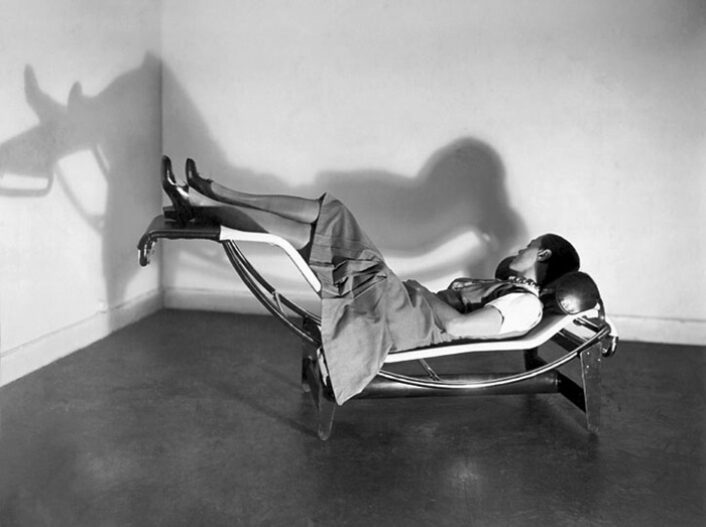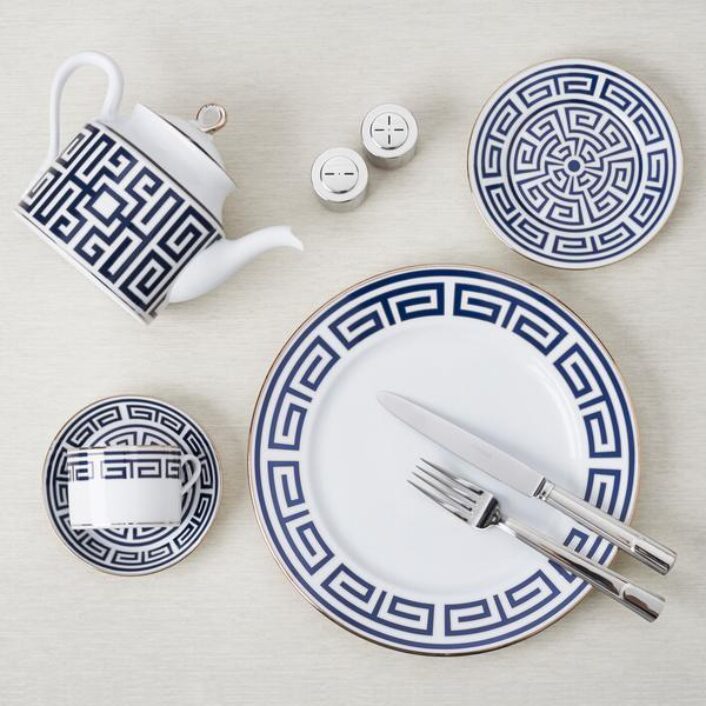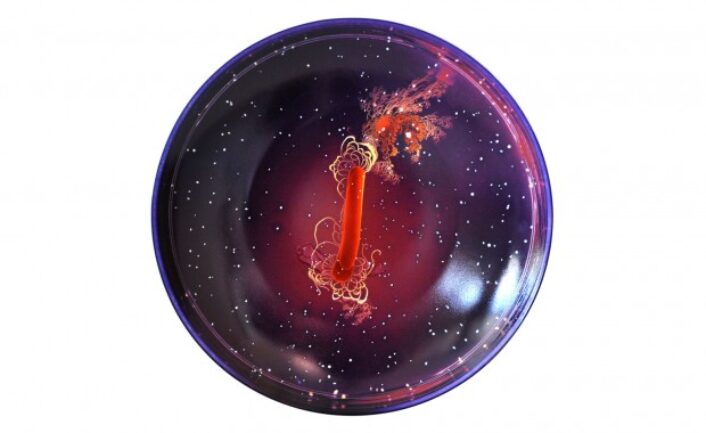An interview with Charlotte Perriand’s daughter… keeper of the archives!
Design
Tableware inspired by Charlotte Perriand’s photography

The plates’ motifs refer to the architect’s photographs of a fishbone, patches of snow melting on rocks, and a tree trunk.
Image courtesy of: Wallpaper
Le Monde de Charlotte Perriand is a new collaboration between Cassina, Ginori 1735, and Pernette Perriand-Barsac, Charlotte’s daughter. Pernette Perriand-Barsac is the founder of her mother’s archives; among those are four different graphic motifs from photographs taken between 1933 and 1934.
The pioneering modernist architect was fascinated with nature. Perriand loved to collect items she discovered, among which are stones, roots, and fish bones, in order to observe their form and pattern. Her daughter said (courtesy of Fooshya), “In those days, photography was still fairly new, it was revolutionary, and Charlotte instantly fell in love with it.”
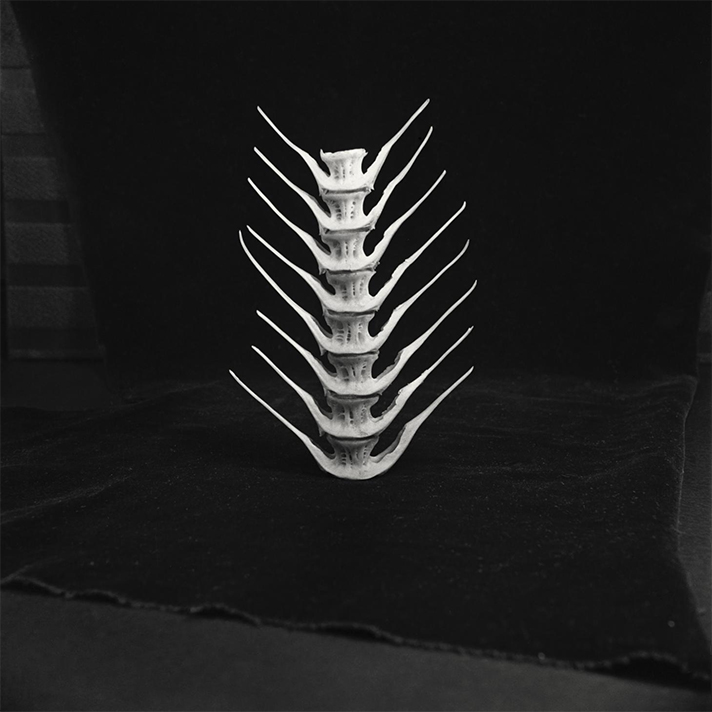
“Arete de poisson,” 1933.
Image courtesy of: Wallpaper
The collection includes a service plate, a dinner plate, a bowl, and a dessert plate which all reference a series of images of nature taken by Perriand in the early 1930’s. The photographs took place in a forest near Fontainebleau, the images captured are “seemingly abstract, poetic textures.” As the silhouettes were transformed into blue, the formerly black and white portrayals become reminders of Perriand’s passion for nature.
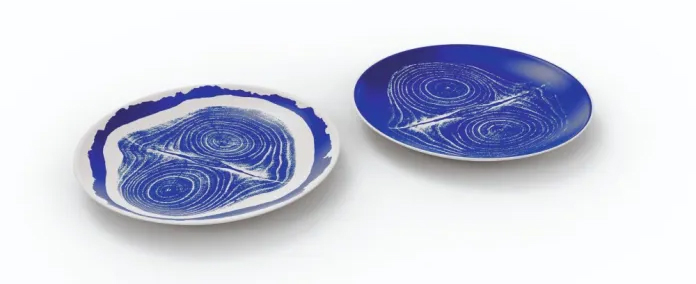
In order to guarantee authenticity, each piece is marked with the Cassina and Ginori 1735 logos.
Image courtesy of: Tableware International
Luckily, Cassina continued their collaboration with Ginori 1735 in order to present the finest porcelain tablewares both in quality and style. Each piece is hand-decorated and accented by patterns in blue and white. At first glance, the images are unrecognizable; however that is short-lived as the designs come into focus.
Whether it is the way a patch of snow falls in a stone’s crevice or a mythological animal or a fish bone against a black background; these portrayals makes us think of a work tool about to start an unfamiliar project. The hope is that all these emotions elevate a culinary experience to a different realm.
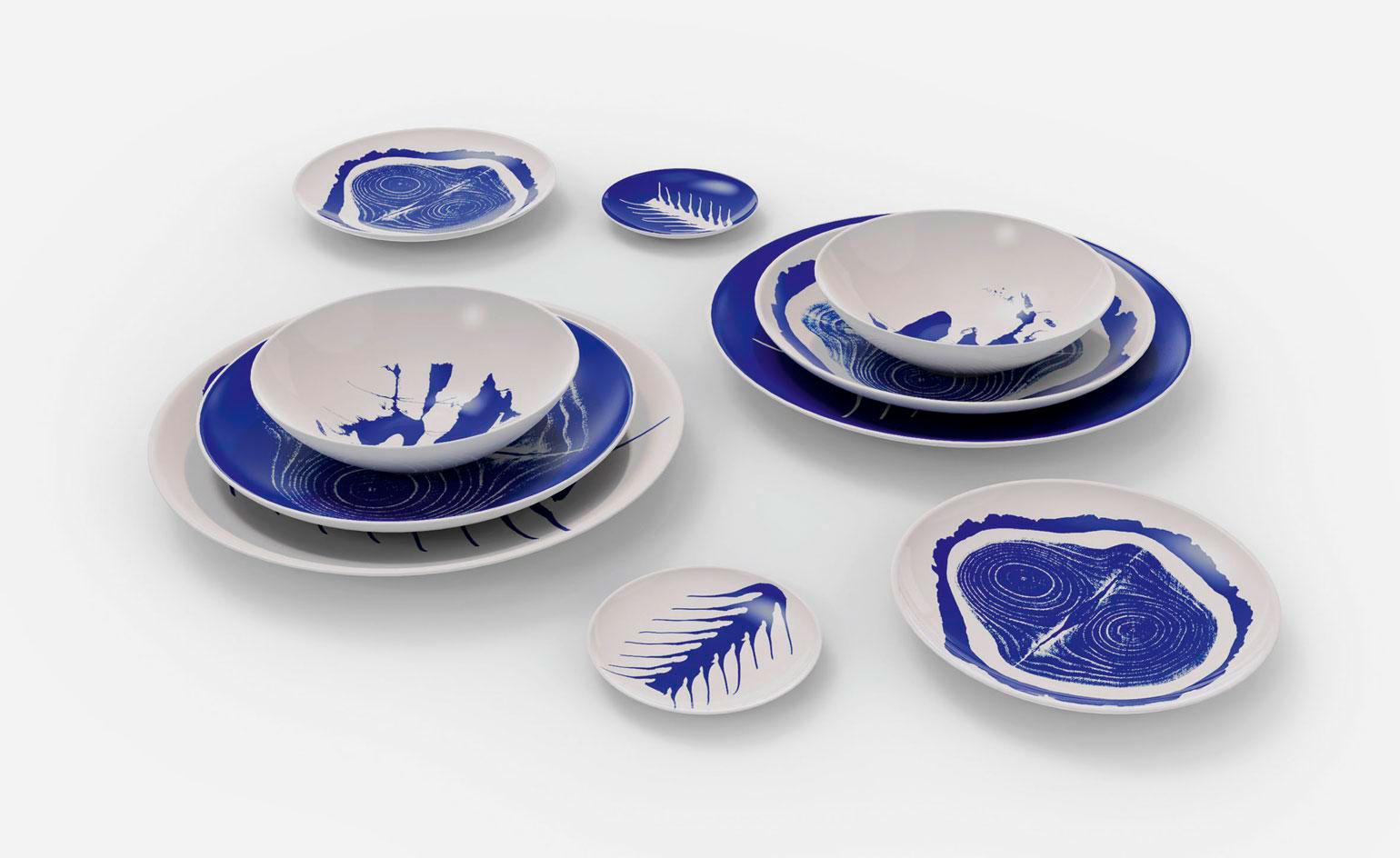
Perriand-Barsac describes the collection: “a glance, energy, poetry.”
Image courtesy of: Tableware International
Perriand was a pioneer of modernity, an urban planner, a designer, an architect, and a photographer. The multi-talented, accomplished woman was committed to a new art style that wound up breaking with the “traditional codes of her era.” Following these images, photographing began taking on a central role in Perriand’s creative process; it become an important source of inspiration for her furniture designs.
Perriand-Barsac said, “In those days, photography was still fairly new, it was revolutionary, and Charlotte instantly fell in love with it. In the 1930s, she photographed far and wide what she called art brut: when she went for a walk, along the seashore, in the countryside, or elsewhere, she picked up fishbones, or a piece of old boot washed up by the sea, and took them home to photograph.”
Perriand, it seems, is having a “moment.” Last summer, London’s Design Museum unveiled “Charlotte Perriand: The Modern Life.” By means of a series of thematic displays, the exhibition featured the words and ideas of the accomplished architect and designer. Perriand’s creative process is shown through a series of photographs, furniture design prototypes, sketches, and notebooks.
The introspective is beautifully set up and the work is explored through three distinct sections that mimic Perriand’s design approach. “The Machine Age” features her start when she favored a modern aesthetic through to her passion and love for all things of nature… the transition to “Nature and the Synthesis of the Arts.” Finally, “Modular Design for Modern Living”, the show’s final section, brings together the process and her vision of a “synthesis of the arts” where art, architecture, and design all come together seamlessly.
